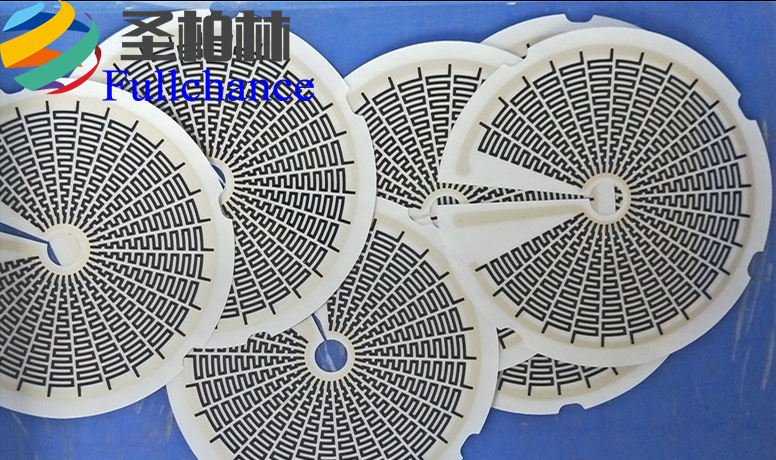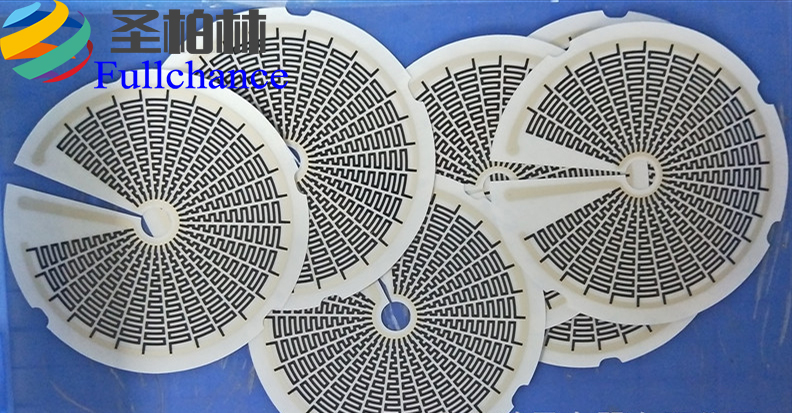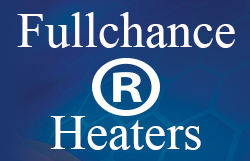|
Flexible Printed Heaters

If you are looking for information on Flexible Printed heaters there are many reasons to continue reading this article. Our goal is to break down the differences between the various types of printed heaters and the advantages they offer. We will also show discuss some examples of printed heaters in action.
Flexible Printed Heater technology is becoming extremely common today and is finding use in various industries and applications. They are commonly used in automotive seat warming, sports apparel and retail clothing industries. They are also found in food service, aerospace, consumer products, medical and healthcare applications. The technology is also used in electronic and electrical industries. There are a number of advantages and benefits of flexible printed heaters. We will review those in this article. There are also some differences in the various types of printed heaters which are used today. Before getting into the details, it would be better to have a good idea of what printed heaters are all about.
What Are Flexible Printed Heaters
Put in plain and simple words, flexible printed heaters are warming elements. They are manufactured to add heat to products, clothing, etc.; Precision screen printing is used to print conductive or resistive inks on flexible materials. The inks are typically comprised of both resistive and conductive materials, including functional carbon or silver. This makes it possible to create different solutions to cater to unique needs and specific requirements. Common print substrates are polyester, polycarbonate, or polyimide – Kapton RS conductive films. They can also be printed on thermoplastic polyurethanes known as TPU. TPU heaters are typical for the garment industry because of the flexibility and elasticity of the material.
Flexible Printed Heaters Multiple Uses
As mentioned above, flexible printed heating devices have a range of uses and applications. They are commonly used in the retail clothing industry and sports garments. With the specialty inks and substrates that are now available, customers can be sure that the circuits will perform well for their application. The flexible construction due to the materials available today, conforms to the curves and build of the human body, allowing the user to move freely and not restrict activity or mobility. The printing is applied to very thin films and will not add any significant weight to the products it is applied to. In case of apparel and wearables, the printing work is done on thin TPU substrates and then they are transferred to textiles using heat transfer. This allows the TPU to be secured to different garments from Athletic Gear, to Medical Bandages, to industrial equipment.
Difference Between Wire, PTC Heaters & Kapton RS Heaters
There are basically three types of heaters which are popular in the industry today:
Wire Heaters
PTC Heaters
Kapton RS Heaters
You are probably familiar with the “old fashioned” wire heaters commonly found in electric blankets. Conventional wire heaters are known for having fixed heat resistance, and continue to be used in many products. The disadvantages of wire heaters are the bulky and sometimes inflexible wires, which can create an uncomfortable touch point against the body. Wire heaters have limited applications when compared to PTC and Kapton RS Heaters.
Positive Temperature Coefficient (PTC) Heater
PTC or Positive Temperature Coefficient heaters are well known for their safety, elasticity, flexibility and ease of use, and are common in garments and wearables. PTC heaters work wonderfully by producing safe and comfortable low heat. PTC carbons work by acting as an electrical resistance and heat up when current is applied.

A screen-printed PTC heater utilizes a silver BUS system with self-regulating carbon tiles. This means that the printed heater is capable of regulating its temperature without any outside controls. When power is applied, the resistance increases and limits the electrical current to the heater causing it to cool. As the heater cools, electrical current will increase again causing it to reach its operating temperature, thus self-regulating. This creates a safe and efficient warming element which eliminates the risk of overheating. Flexible Printed PTC heaters provide uniform heat with no hot spots, require less power to operate and are safer to use due to their cold-state failure mode. This is what makes this type of flexible printed heater so ideal for clothing.
The PTC Heaters can be printed on flexible material such as DuPont Intexar TPU. This has a side that Kapton® RS
Kapton heaters are used in situations where the heating requirements are higher. Both PTC heaters and Kapton RS are commonly most printed heaters these days. Kapton RS certainly has some unique features.
Kapton RS is a high quality electrically conductive polyamide film. Kapton is thin and lightweight. Kapton only requires the need to print conductive silver bus bars in order to create heating zones because the film is self is resistive such as the carbon ink used in PTC heaters. Kapton RS heaters give you uniform heating and much higher temperatures. Kapton can reach temperatures of up to 240° C. This makes it ideal for industrial applications where elevated temperatures are a must. Kapton RS heaters have a wider acceptance and application use. They are more widely used in aerospace applications and automotive interior heating. They are also commonly used in wind turbine deicing. The one downside to Kapton RS heaters is that they need to be regulated to maintain a constant temperature. The more power you supply the hotter it gets. You can view Fullchance'swebsite on Kapton RS or to download data sheets by clicking here: Kapton® RS for Thin, Flexible, Lightweight Heaters.
Resistive Property
When you compare Kapton RS with PTC heaters you will find a difference in their resistive properties. Kapton RS inherently offers uniform resistance, which ensures constant surface temperatures.
Hence, if you are looking for selective applications where uniform heating is needed Kapton RS would be the best choice. However, when it comes to recurring cost of usage, PTC heaters perhaps are better.
The Final Word
At the end of the day, there is no doubt that both PTC heaters and Kapton RS heaters have their own pros and cons.FullchanceTechnologies Inc. has expertise in both technologies and can assist in making you comfortable with the application that suits your needs. There is no doubt the world of flexible printed heating systems is evolving rapidly. If you have an application for a flexible printed heater, get in touch with us. We would be happy to talk with you. We can help you choose the technology that will meet your specific needs and requirements.
|
- Home
- Silicone Heater
Foam insulation silicone heater
Silicone heater with temperature controller
SILICONE RUBBER HEATERS – ACCESSORIES
Silicone Heater for Small Diameter Pipes and Tubing
special shaped silicone rubber heater
Different color silicone heater
Type W / Type E Silicone Rubber Heate
features&application of wire wound silicone heater
Standard silicon rubber heater
Silicone band Heater With Springs
Silicone Drum Heater With Velcro Straps
Silicone Drum Heater With Temperature Controller
Silicone Rubber Heater Temperature Controls
Useful information for designing silicone heaters
- Thick Film Heater
what are ceramic based thick film heaters,resistors,circuits of devices
Is thick film right for my applications
what base or substrate materials are available
what are the benefits of thick film heaters
which substrate materials should use?
what termination options are available?
what are the wattage densities of the thick film conduction heaters
waht if a standard thick film heater is close but not perfect for my applications
AVIATION LATCH HEATER(thick film on ceramic
2-ZONE HEATER FOR HANDHELD ANALYTIC DEVICE
DEVICE HEATING ELEMENT FOR USE IN A HIGHLY SENSITIVE MAGNETOMETER
- Polyester heater
- Epoxy Resin Heater
- Kapton heater
- Mica Heater
Mica HeaterUltra-thin・high Watt precision heater
High Frequency Round Mica Plate Heater Customized
High Temperature Surface Mica Heating Element
High Reliability Mica Heater Plate , Mica Electric Heaters Multi Function
The electric film mica heating element introduced
Mica Panel Heater/Heating Element
- Ceramic Heater
Alumina metallic ceramic heating element
Rectangular alumina metallic ceramic heating element specification
Round shape alumina metallic ceramic heating element specifications
Rod shape alumina metallic ceramic heating element specifications
4mm alumina ceramic porous wick for electronic cigarette
5W Ceramic Heater Element for Car Sensor 12V
MCH Printing Porous Ceramic Heating Element for Electric Cigarette
Electroniccigarette ceramic heater
Pellet System Applications Igniters
- Transparent Heater
Transparent Heater utilizes ITO technology
transparent heater custom&design
Transparent Heater with Nanofibrous Membranes
stretchable transparent heater
Clear Heater (ITO Heater), Anti-fog Heater, ITO film Heater, Film Heater, Transparent Heater
Clear Heater (ITO Heater for LCD display
Clear Heater (ITO Heater), Anti-fog Heater for TP 8 inch LCD display
ITO film Heater, Film Heater, Transparent Heater
- News
How to Install a Silicone Heater Build Plate
How a Silicone Heating Pad Works
Types of Flexible Silicone Rubber Heaters
Why Use Silicone rubber Heaters Over Other Heaters?
5 Advantages of silicone rubber heaters
Everything you ever wanted to know about Kapton heaters but were afraid to ask
what is ELECTRICALLY HEATED SILICONE BLANKETS
What Are Flexible Printed Heaters?
how to test kapton heater with Lithium Polymer (LiPo) battery
application of polyimide kapton heater
3D Printing Custom heaters for additive manufacturing and 3D printing
How do Polyimide Heaters Work?
What are the Operating Temperatures of Polyimide Heaters?
What are the Applications of a Polyimide Heater?
max working temperature of Polyimide Heater
How Does A Micathermic Space Heater Work Faster Than Regular Heaters
Are Mica Panel Heaters Safe and Effective?
From consulting and design services to product manufacturing
Things to Consider When Specifying a Heating Application
Kapton Flexible Heaters - Flexible Heating Solutions
Thick film elements - Technical data
How do I estimate battery run-time for my heated device?
Understanding Watt Density in Heater Design
latest product-230V 1.2W 50000ohms carbon heater
what is etched-foil kapton heaters
ITO conductive glass and related transparent conductive films
- Data Download
Fullchance FILM HEATERTEST WITH SINK
Electric heating film product catalog
Ceramic electric heating tube product catalog
ITO conductive glass and related transparent conductive films
Transparent electric heating film video
PI High Temperature Electric Heating Plate Test Video 300 degrees
Transparent electric heating film inspection report
General testing standard for mica electric heating plates
Hot stamping machine, baking cup heating pad information download
Electric Heating Production Operation Instructions
Electric heating film, flexible heating film test report
Operating Procedures for Electric Heating Plate Production
Analysis of Electric Heating Plate Mechanism
Test Report on Kapton (PI) Insulation Layer for Electronic Cigarette
Temperature Uniformity Test Video for Epoxy Resin Electric Heating Plate
Production process and process flowchart of electric heating film
Instructions for Inspection of Mica Heating Plate
Technical description of ITO transparent electric heating pads for ski goggles and helmets
- Company Profile
- Factory Equipment
Electric heating film application - medical diagnostic equipment
Electric Heating Film Application - Aviation
Application of Electric Heating Film - National Defense
Electric Heating Film Application - Engineering Automation
Electric heating film application - power generation
Electric Heating Film Application - Rotating Machinery
Electric heating film application - semiconductor manufacturing
Electric Heating Film Applications - Industrial&Commercial Applications
Installation drawing of CT325 temperature controller
CT435 Temperature Control Installation Drawing
Installation Drawing of CT425 PID Temperature Control System
- Contact Us


 customer service1
customer service1 